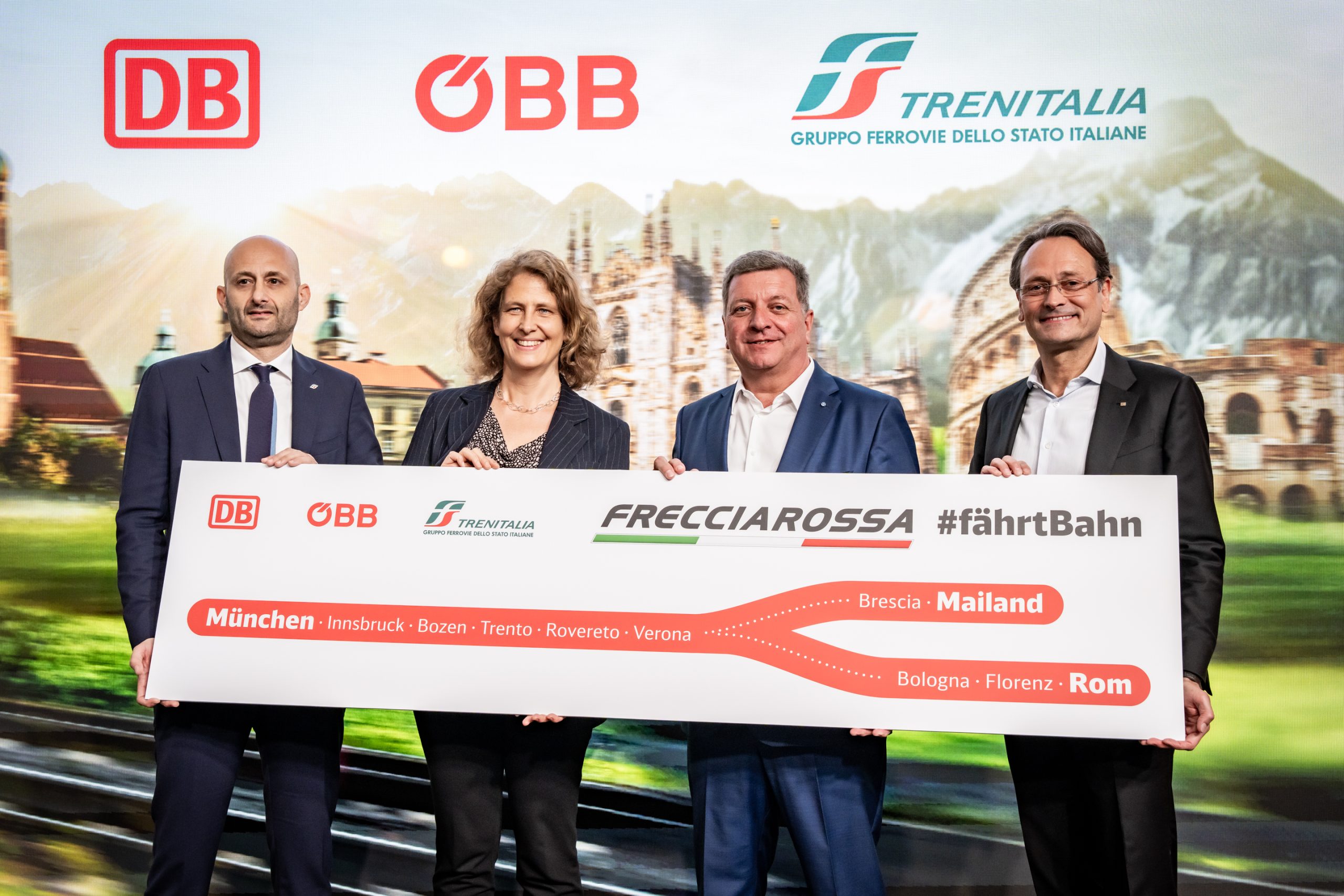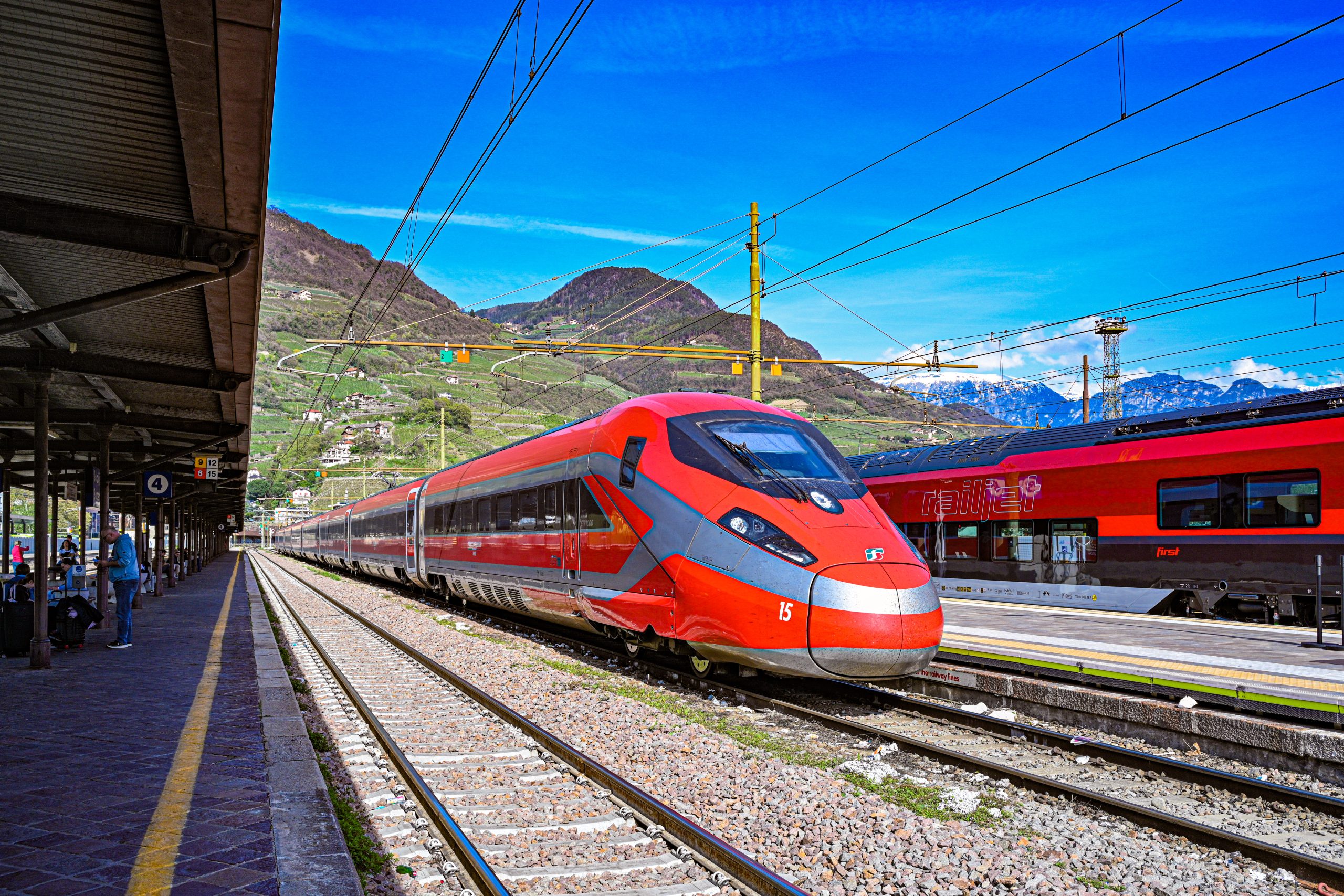Deutsche Bahn (DB), Trenitalia, and the Austrian Federal Railways (ÖBB) have formed a partnership to introduce new direct rail connections between Munich and Milan, as well as Munich and Rome. Starting in late 2026, Italy’s Frecciarossa high-speed trains will take European travellers along a 600 km route from Munich to Milan, and around 900 km from Munich to Rome, with no need to change trains.

From December 2028, additional services are expected to be introduced, linking Milan with Berlin and Naples with Berlin. The journey time between Munich and Milan will be around 6 hours and 30 minutes, and from Munich to Rome approximately 8 hours and 30 minutes. With the planned opening of the Brenner Base Tunnel at the end of 2032, journey times are expected to be reduced by around one hour.
“Europe is becoming ever more interconnected by rail. We are seeing that people increasingly want to travel across borders in an environmentally friendly way by train. Our joint project will give a further boost to the booming international long-distance rail market. After all, a successful cross-border rail network in Europe can only be achieved through cooperation, given the complex regulatory and operational conditions,” said Michael Peterson, DB Board Member for Long-Distance Passenger Services.
The new connections will be technically and operationally challenging. The Frecciarossa 1000 will be deployed on these services. These 200-metre-long trains, featuring eight carriages and 462 seats across four comfort classes, are currently being adapted by manufacturers Hitachi and Alstom for operation in Germany and Austria. Once this adaptation is completed, extensive testing and certification will be carried out in all three countries. The Frecciarossa 1000 is designed and built for use in Italy and across the wider European rail network.
Successful and timely approval by Hitachi, Alstom, and the relevant authorities is essential for launching services in December 2026. The new direct rail connections will be introduced in two phases. In the first phase, two return services (one in each direction) are planned: one between Munich and Milan, and one between Munich and Rome. Innsbruck will act as the central hub for the new service. Planned intermediate stops between Munich and Milan include Bolzano, Trento, Rovereto, Verona, and Brescia. The Munich-Rome service will call at Innsbruck, Bolzano, Trento, Rovereto, Verona, Bologna, and Florence.
The service network is set to expand gradually towards Berlin and Naples from December 2028. The full offering will eventually comprise five train pairs between Germany and Italy:
Core Service: Munich–Milan
- Munich–Innsbruck–Verona–Milan;
- Berlin–Munich–Innsbruck–Verona–Milan
Core Service: Munich–Rome
- Munich–Innsbruck–Verona–Bologna–Florence–Rome;
- Munich–Innsbruck–Verona–Bologna–Florence–Rome–Naples; and
- Berlin–Munich–Verona–Bologna–Florence–Rome–Naples
“The train we are bringing to Germany represents Italian excellence in design, innovative materials, comfort, and sustainability, and it is compatible with most European high-speed networks. Thanks to the support of DB and ÖBB, Italy will be even more closely connected to Germany and Austria by rail,” said Gianpiero Strisciuglio, CEO of Trenitalia.

“This new connection will link Austria and Tyrol to the Italian high-speed rail network for the first time. It brings Europe’s regions closer together – quickly, comfortably, and in an environmentally friendly way. Especially in the sensitive Alpine region, every passenger who chooses the train over a car or plane is a win for the environment and the climate,” said Sabine Stock, Board Member for Passenger Transport at ÖBB.
These direct rail connections are part of a European Commission initiative aimed at removing barriers to international rail transport, improving market conditions, and developing attractive, sustainable mobility across Europe. The initiative is one of the ten selected pilot projects announced by the European Commission in 2023.
“Expanding high-speed rail, especially cross-border services, is a top priority for us. This new connection between Germany, Austria, and Italy is a prime example of the progress we’re making in that direction. I’m especially proud that it is one of the ten pilot projects supported by the European Commission to help make new cross-border rail links a reality,” said Apostolos Tzitzikostas, the EU Commissioner for Sustainable Transport and Tourism.
Share on:



